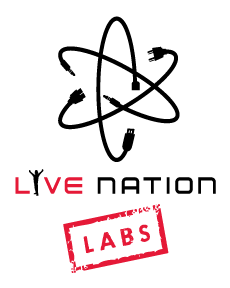Links to slides are added as we get them in; anything missing has already been requested. Don't see a talk you want slides for? Ping the speaker and help us bug them to send em' our way! We'll also post video links here as they're done with processing.
Session Details
Snappy Means Happy: Performance in Ember Apps
by Matthew Beale
Ember is fast. Ember Core is working hard to make Ember even faster. So why does your app drag?
The performance of a single-page app is impacted by the performance characteristics of its foundational parts: Persistence, the DOM, and JavaScript. Ember provides tools to manage these cornerstones, but with the tradeoff of introducing its own characteristics.
In this talk, we will use the source of real, shipped Ember apps (and of Ember itself) to diagnose, understand, and improve slow interactions. The Chrome developer tools and Ember instrumentation will help us understand slow code paths and identify opportunities for improvement. Along the way, we will learn how parts of Ember work at the macro and micro level and learn how the framework helps us manage performance challenges in a browser environment.
The Unofficial, Official Ember Testing Guide
by Eric Berry
Ember is a framework for creating ambitious web applications. Ambitious applications need tests. Although many find it difficult to weed through the various sources of information, it is possible to thoroughly test your Ember application today. We've aggregated the collective experiences, trials and errors regarding testing Ember applications from leaders in the Ember community to create The Unofficial, Official Ember Testing Guide. We'll walk through it live, cover specific testing scenarios and solve real testing dilemmas.
You'll leave this session knowing what to test, how to approach it with confidence, and the resources available to fall back on when you need it.
Ember is for the Children
by DeVaris Brown
This talk chronicles my adventures in teaching underrepresented and underserved youth in the Bay Area, CA how to program using Ember. Unemployment for people 16-24 is around 17% almost double the national average. This number is even higher for minorities > 30% depending on which demographic you choose. Hacker academies are seen as a solution to this issue, but is often cost prohibitive. I wanted to pilot a program that would teach people how to program for free alongside professional engineers to learn best practices. The results went beyond what I and those were involved expected.
HTMLBars: The Next-Generation of Templating in Ember.js
by Erik Bryn and Kris Selden
The Ember.js community is ablaze with excitement over HTMLBars. Not only will it give us great syntax in our templates, but it will also usher in next-generation rendering performance in an upcoming 1.x stable release. Erik and Kris will walk through the design decisions and usage examples of how HTMLBars will alter the landscape of HTML templating solutions.
Animations and Transitions in an Ember App
by Edward Faulkner
Animations and transitions are fundamental to the unique character and feel of your product. With a few key ideas, you'll be able to build any custom behavior you want into your Ember application.
Learn about reusable, well-encapsulated techniques that work reliably, play well with integration tests, and give native-app-like performance on mobile devices.
The {{x-foo}} in You
by Ryan Florence
TDeclarative, evented, data-bound components will change the way you build abstractions in browser applications. The best part is, you're already an expert, you just might not know it yet.
We'll discuss how to:
- Use a component
- Know when not to use a component
- Communicate with the world outside the component
- Refactor large components
- Test components in isolation
- Make components accessible
Controlling Route Traversal with Flows
by Nathan Hammond
So let's say you're building an online banking application using Ember and your login process has about eighteen different permutations to get through the next few steps. Oh, and every one of those steps are optional, depend on which steps you've been to previously, and the server's state. Easy, right?
We'll review a tree-shaped state machine implementation of moving around inside of an application along a scripted flow that loads any information it needs from the Ember resolver.
Contributing to Ember: The Inside Scoop
by Robert Jackson
Confused about how the release process works? Curious what the heck feature flags are? Wondering which commit prefix you should use for your latest pull request? This talk will answer these questions (and many more).
It will include insights into the release process, feature flagging, the build process, which commit prefixes to use, and how to create custom builds with features enabled by default.
Using Ember to Make the Seemingly Impossible Easy
by Heyjin Kim and André Malan
The fact that Ember is different to everything else out there means that there are things you can do with Ember within a couple of hours that would take days to accomplish in other frameworks. The Ember community is going to have a lot of fun over the next few years discovering all the innovative ways that they can use the platform. We will highlight some of the awesome hacks that we have found and hopefully inspire you to look deeper into your own app and see what crazy things you could be doing.
No more `grunt watch`: Modern build workflows with Broccoli
by Jo Liss
Broccoli is the newest JavaScript-based build tool everyone's talking about. It helps you concatenate your scripts, compile your Sass files, and package up your ES6 modules—all while offering a concise declarative syntax, and blazing fast rebuilds.
Building on that foundation, ember-cli is a project to bring an opinionated, Broccoli-based build stack to Ember developers, tuned with their specific needs in mind.
Learn how to use Broccoli and ember-cli to define modern build workflows for your Ember applications, harnessing preprocessors such as Sass and CoffeeScript without losing sub-second rebuild times.
Modeling the App Store and iTunes with Ember Data
by Jeremy Mack
I've spent the last six months mapping the entire data model of App Store and iTunes. The application I've created is like no other search engine in existence.It's 2014 and we're still searching for documents. Today, I'm debuting the next-generation of search, and it's built entirely with Ember and Ember Data. You're going to see how I did it, and why Ember Data was the prefect tool for the job.
Expect code samples, anchored by examples of real use within a polished Ember application. I expect the audience to leave my talk energized, seeing the power of Ember Data, wanting to try it out for themselves on the web of APIs that are now within their reach.
The Future of Ember.Component
by Alex Matchneer
Ember.Component, Web Components, directives, isolated scopes, transclusion, and all the other stabs at establishing a component ecosystem thus far fail when it comes to composability and extensibility. This talk is about what's missing, what's being done about (at least on the Ember side), and what to expect in 2014.
Convergent/Divergent
by Christopher Meiklejohn
Whether you realize it or not, if you've built a rich web application in Ember.js, and you're sending data between clients and a server, you've build a distributed system. This talk will discuss the challenges of building such a system, specifically the challenges related to preserving consistency when dealing with concurrent actors. We will begin with a primer on the various types of consistency, covering topics such as eventual consistency and causal consistency, and then move on to discuss recent industrial and academic research that aims to solve some of these problems without synchronization, specifically discussing operational transformations and convergent and commutative replicated data types.
Ember Components Transclude My Directives
by John Paul
I know this is out of left field, but I’d like to teach you all some Angular, and in the process, bring you to a love of Ember Components unseen since Leo sank into his watery grave for Kate. We all make fun of directives and transclusion, but Ember has very equivalent features, which much more elegant APIs. Once we have a basic understanding of what directives and components bring to the table, I’ll explain why Ember Components are awesome, unbelievably useful, and unparalleled in expressiveness.
Software Productivity and Ember: Ember CLI
by Stefan Penner
Over the past few years, we have seen the success of great web applications. As we strive to provide better user experiences we are continuously pushing the bar, unfortunately sometimes at the cost of productivity, maintainability and most importantly happiness.
When products slow or fail under the pain of un-managed technical debt, everyone loses.
This talk showcases how ember helps manage this complexity today, where it falls shorts, and most importantly we will explore what the future of ember may look like.
Ember Data and the Way Forward
by Igor Terzic
Have you considered using Ember Data for your project, but were scared away? Have you tried using it and got stuck? Do you actually use it every day and wonder what the internets have against it?
In the last year Ember Data was refreshed, rebooted and is now better focused, slimmer and more approachable. This talk will walk you through the ideas behind the new Ember Data, help you decide whether it is right for you, and teach you how to easily extend it to suit your needs.
2014 Sponsors
Events like EmberConf rely on community sponsors to help make it all happen! If you or your company are interested in sponsoring, download our prospectus here, and get in touch with any questions.















